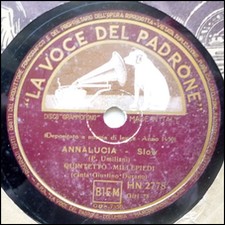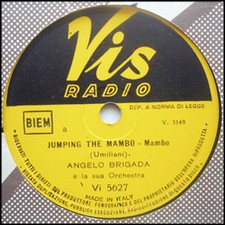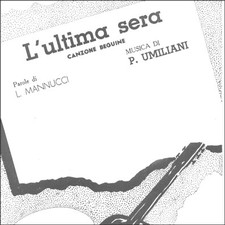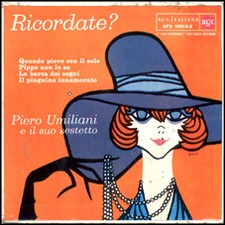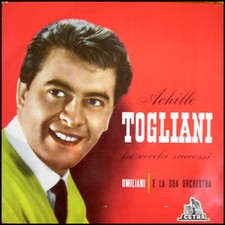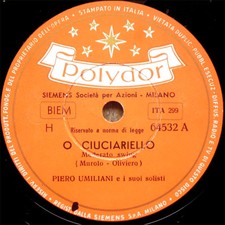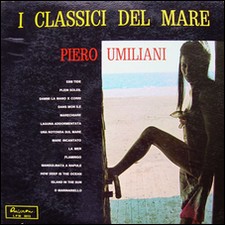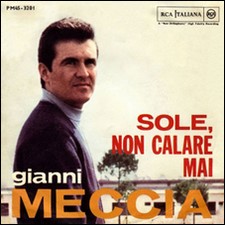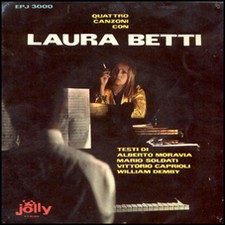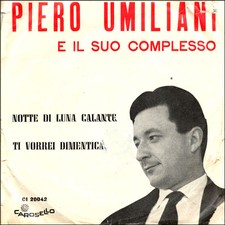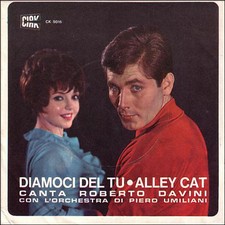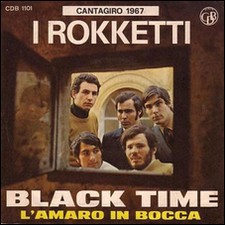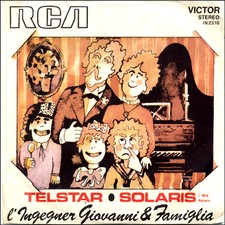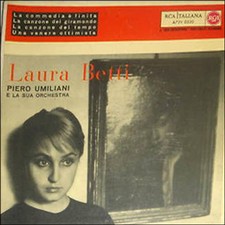Piero Umiliani - The Official Website - International Version
Main menu:
Pop Music
Music, Maestro!
''Annalucia'' di Piero Umiliani incisa dal Quintetto Millepiedi con Giustino Durano. La Voce del Padrone HN 2778.
"In the world of Pop Music, a song is like a dish and the arrangement is like his sauce. I prepared an hot sauce but easy to digest".
Piero Umiliani
MAMBO, DIXIE, RUMBA and SLOW FOX...
During the last century the line between jazz and Pop Music was defined for more times but without reach an exactly settlement. The only truth that we have about this argument is the impossibility to decide the border between music for the elite and music for the masses. What yesterday it was popular today maybe can be a "standard". A simply but swingin' song now is considered an easy jazz track, and so on.
The relationship between Piero Umiliani and Pop Music, orchestral beat or funk it makes no difference, start in 1952 when the Radio Orchestras play some musical scores of the maestro distributed by the Omega Music Publishing.
"L'Ultima Sera" a beguine with Lucia Mannucci's lyrics, former of Quartetto Cetra, and some other titles as "C'č un Perché", "Se Questo č l'Amore", "Eterni Perchč", "Trotta Piano, Piano"...
In that period the Italian music is market is a little market and these compositions, despite the radio success, are not recorded for the store distribution.
The first records were produced just in the mid-fifties with the performance of some italian Orchestras like Angelo Brigada Orchestra or Franco Chiari Orchestra, or performed by the romantic voices of Rino Loddo, the Quintetto Millepiedi or by a very young crooner named Teddy Reno.
The Radio Stations broadcast some danceable tracks from records that report the style on the label near the song title: beguine, slow fox, dixie... In this way all the records buyers and the dance lovers know what rhythm was played by the bands.
"Piero Umiliani e i suoi Solisti" (that record in private our own avantgarde productions as "Mambop" or "Formula") debut in 1954 with some 78 rpm for the RCA, with new arrangements of neapolitan songs ("Luna Rossa", "Scalinatella"...) and, if we think about it, Piero Umiliani is among the first to fuzz the line between jazz and Pop Music with the LP "Dixieland in Naples", recorded in 1955, where famous italian hits were interpretated in dixieland and swing style.
With the same feeling of fusion Umiliani in 1960 records two EPs with the soprano Anna Moffo, one dedicated to Irving Berlin, with the classic "Cheek to Cheek" and the other one to George Gershwin.
BETWEEN NAPLES, FLORENCE and SANREMO
In the melodic range the collaborations with the singers of that time reach the top with the italian crooner Achille Togliani. Piero Umiliani records many microgrooves with him and tour all over the country, performing at the 5° Festival of the Neapolitan Songs with the titles "Felicitą" and "Suonno e Fantasia".
Umiliani appreciate the neapolitan melody, he consider it as the most pure Italian musical expression and records for the Polydor label the 78 rpm singles "O Ciuciariello" and "Serenatella Sciuč Sciuč".
The relationship with Naples not end in those years but it evolves in the seventies with an electronic project named "Switched on Naples, published with our own label SoundWorkshop and where is included an odd and uncoventional interpretation of the classic "O Pazzariello".
With the Tuscany Odoardo Spadaro, a populra italian folksinger, Umiliani records the album "Le Canzoni Firenze" for the label Rca Camden.
1957 is the year of the debut at the Sanremo Festival as songwriter of "Sono un Sognatore" ( see this page) but this is a year of study and reflections about his music. In the same year - is the friend Achille Togliani to reveal it at the Press - the Maestro take some sabbatic months entirely dedicated to the study of the jazz music.
Despite the jazzistic and film score music career that it will start in 1958 (Big Deal in Madonna Street) Piero does not forgive the Pop Music with some his own projects as "I Classici del Mare", one of the few albums of the Omicron label distributed in the stores, and with many songs written for the movies (see this page) and sung by various bands and vocalist: Miranda Martino ("Le Ambiziose"), Nico Fidenco ("La Celestina P.R."), Sergio Endrigo ("Un Colpo da Mille Miliardi"), Catherine Spaak ("La Notte č Fatta per Rubare") Gianni Meccia ("Colpo Gobbo all'Italiana"), "Mariti a Congresso", Gisella Ferrini ("002 Agenti Segretissimi"), Orietta Berti ("Agente 3S3 Massacro al Sole"), Toni Cucchiara ("Bianco, Giallo, Rosso, Rosa", "Tutto il Bello dell'Uomo") Joe Sentieri ("Roulotte e Roulette") , Anna Arazzini ("La Morte Bussa due Volte"), I Corvi ("Che Notte Ragazzi!"), and also the rock-progressive band Il Balletto di Bronzo ("Cinque Bambole per la Luna d'Agosto").
Out of the soundtracks and TV themes Umiliani records in 1962 some singles for the Carosello Records.
Two titles are of jazz music and two are more oriented to pop music and exactly are a version of Domenico Modugno's "Notte di Luna Calante" and the standard "Ma L'Amore No". The Sixties are the years of Cantagiro, a travelling music show around the most famous italian cities. For this music challenge Umiliani composes for the singer Roberto Davini "Diamoci del Tu" (1963) and for the band The Rokketti the rhythm and blues track "Black Time" (1967) heavily influenced by the James Brown's sound. Always of that period is "Pioggia di Immagini" sung by Renzo and The Quentrals (1968).
MUSIC AND LITERATURE
A different story is the repertoire performed by the actress-singer Laura Betti with the lyrics written by famous writers as Alberto Moravia, Mario Soldati, William Demby, the actor and director Vittorio Caprioli and, last but not least, Pier Paolo Pasolini. Umiliani, composer appreciated by the world of literature, composes the music for a set of songs with theatrical taste, anticonventional as "Valzer della Toppa", it will be a standard of his genre. The song reached the italian charts in the seventies with the rendition of Gabriella Ferri.
In the same period Piero Umiliani under the pseudonym Ingegner Giovanni e Famiglia plays the moog and performs the electronic track "Telstar" written by the english composer Joe Meek.
The pop music history of Piero Umiliani is a long story.
We can search infinite connections between the Maestro and pop, beat, folk and funk but, if we think about it just a little more, we can say that is Piero Umiliani the author of the ultimate pop hit, but this is another story...
''Jumping the Mambo'' scritta da Umiliani e incisa dall'Orchestra di Angelo Brigada su 78 giri VIS VI 5627.
